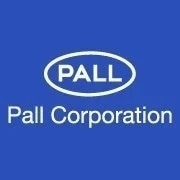The scaling-up of industrialized processes involved in manufacturing gene therapy products face many challenges. These challenges must be addressed and overcome if these important advancements are to be successful in the marketplace.

Image credit: Pall Corporation
Effectively commercializing gene therapies for patient use requires considerable financial investment and dedicated resources. It is also extremely time-consuming.
Despite this, the huge therapeutic potential of gene therapy treatments and the considerable commercial opportunities associated with them means that the effort involved in bringing these therapies to market is worthwhile.
The road to industrialization is complicated, but successfully developing robust processes can lead to immense benefits. The industry continues to expand rapidly, with novel approaches regularly being implemented in response to new and existing challenges.
The use of innovative methods is also more and more commonplace, particularly in medicinal applications and in the development of new drugs to treat rare diseases. It takes substantial developmental effort to efficiently manufacture sufficient quantities of high-quality product.
A number of challenges surround reimbursement for treatment, while the difficulties associated with reduced time to approval have placed increased pressure on manufactures to rapidly develop appropriate, cost-effective processes.
It is important to keep the cost of goods (COGs) below critical threshold levels if sufficient profit margins are to be maintained, despite process development timelines being short. There are a plethora of key considerations and decisions to be addressed. This article explores some of these underlying manufacturing challenges.
The importance of a scalable manufacturing platform
Technologies employed in the manufacture of gene therapy biologics are progressing rapidly. It is necessary to establish a platform that is suitable and scalable to accommodate these advancements, but many manufacturers struggle to achieve this.
The manufacturing process should be optimized throughout numerous clinical development stages, but any alteration in the manufacturing process designed to enhance quality or increase product yield carries with it the risk of altering the product itself.
Close attention must therefore be paid to tracking variation throughout the whole development process.
Outdated, non-commercially viable platforms are still being employed in considerable numbers in early-stage development. Transferring processes to new platforms is vital in these circumstances.
A product must be very well characterized during development in order to achieve manufacturing platform advancement. This high level of characterization allows investigators to generate data sets that establish comparability between products used in clinical studies and those produced via the final manufacturing process.
Cost of goods (COGs)
The cost of goods associated with drug product manufacturing will affect the overall price of the therapy, in turn heavily impacting the profit margin realized by manufacturing gene therapies. High production costs are a challenge that will impact overall profitability.
These high production costs are also reflected in the high prices of newly approved gene therapy drugs including Kymriah™, Yescarta™ and Luxturna™ - all of which are currently priced in at several 100 thousand dollars per dose.
The issue of cost is of key concern, particularly if it is not possible to sell the product in development at a price high enough to achieve a commercially viable profit margin. Should it not be possible to meet acceptable profit margins, developers may opt to terminate production, essentially making the drug unavailable to patients.
The extraordinary value and life changing nature of gene therapy treatments have seen the entire industry exhibit commitment towards developing cost-effective manufacturing methods. This effort is significant across the industry, with all stakeholders working towards this shared goal.
The primary cost contributor to the overall COGs for gene therapy products is currently the high-quality clinical grade plasmid DNA that contains the therapeutic gene of interest.
This reagent is necessary for the transient transfection of cells, and it is vital that the reagent is of sufficiently high quality. Quality is imperative because this essential component of the process is key in assuring an acceptable safety profile.
Another notable example of a costly gene therapy product is Zolgensma™. This new drug was recently approved for the treatment of spinal muscular atrophy (SMA) - a rare disease that triggers severe muscle weakness, affecting patients’ ability to speak, breath and move.
There is currently no cure for SMA, and almost all babies born with a common form of the disease die before they reach two years of age. Zolgensma™ is currently the only treatment option available to cure the 10,000 – 25,000 affected individuals in the US, but this therapy could cost as much as $2.1 million per patient.1
Reimbursement
Market size is a key factor with the potential to limit effective commercial return. Should the market size be too small, profitability will be limited due to the small number of doses needed to treat the patient population.
This will reduce the profit margin realized by the drug developer, potentially lowering the developer’s motivation to commercialize the therapy.
The most promising characteristic of the gene therapy revolution is that the initial round of gene therapy products was developed for exceptionally rare diseases. The development of therapies for these small patient populations indicates the industry’s commitment to treating previously untreatable diseases.
These patients can often be cured using a single drug application, though this inherent property of the therapy may further limit commercial profitability.
Often, patients do not pay for these high-cost medicines themselves, instead looking towards health care insurance providers and government programs to reimburse the manufacturer for treatments.
Health insurance reimbursement plans for new products bring new challenges, especially when these concern new category products like gene therapy.
It is anticipated that reimbursement processes will vary between countries and that these processes will also be impacted by factors such as politics, economics and demographic data.
Should the current cost of manufacturing be maintained, drugs like Zolgensma™ may place a tremendous financial strain on health systems.
For example, it has been speculated that treating widespread diseases such as hemophilia, which affects approximately 20,000 people in the US alone, could result in a financial crisis.1
As modern medicine continues to advance, the effective commercialization of gene therapies will require substantial advancement in manufacturing processes with a view to reducing costs. It will also require the implementation of a practical reimbursement strategy.
Both these factors are essential if drug developers are to continue to explore new medical frontiers.
References
1. Business Insider. www.businessinsider.com/gene-therapy-treats-disease-but-prices-could-strain-us-health-system-2019-2
*Kymriah is a trademark of Novartis AG., Luxturna is a trademark of Spark Therapeutics, Inc., Yescarta is a trademark of Kite Pharma, Inc., Zolgensma is a trademark of AveXis Inc.
Acknowledgments
Produced from materials originally authored by Dr. Mark Szczypka from Pall Corporation.
About Pall Corporation

Pall Corporation is a global leader in high-tech filtration, separation and purification, serving the diverse needs of customers across the broad spectrum of life sciences and industry.
Pall Life Sciences provides cutting-edge solutions for customers who discover, develop and produce biotech drugs, vaccines, cell therapies and classic pharmaceuticals.
Our advanced medical technologies are often a patient’s last line of defense from dangerous pathogens. And our food and beverage products provide critical protection from contaminants during various manufacturing steps.
Pall Industrial serves customers in the microelectronics, aerospace, fuels, petrochemical, chemical, automotive and power generation industries.
Our products play key roles in:
- Manufacturing innovative semiconductors and consumer electronics
- Filtration for commercial and military aerospace vehicles
- Maintaining reliability of essential industrial equipment
- Addressing mounting water quality, scarcity and demand issues
- Helping energy companies maximize production and develop commercially successful next generation fuels
Headquartered in Port Washington, New York, Pall has offices and plants throughout the world.
For more on how we enable a greener, safer future, visit Pall - Enabling A Greener, Safer Future.
Sponsored Content Policy: News-Medical.net publishes articles and related content that may be derived from sources where we have existing commercial relationships, provided such content adds value to the core editorial ethos of News-Medical.Net which is to educate and inform site visitors interested in medical research, science, medical devices and treatments.